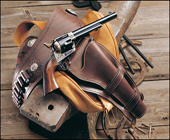
The right to keep and bear arms is enshrined in our American Constitution and culture to the point that many think this right is uniquely American.
However, the historical evidence is quite surprising. Pre-modern and pre-industrial cultures also promoted arms ownership. Organic Christian society recognized the natural-law right of the family to defend itself from outside danger. And it seems this right was upheld with almost American eagerness.
Historian Carlo Cipolla cites the case of the French city of Troyes which in 1474 had about 2,300 households, making it a medium-sized city for the time. He claims that while the modern state reduces to insignificance the weaponry owned by individuals, pre-industrial Europe was entirely different. Private arms holdings represented a sizable amount of wealth and had some proportion to that held by the State.
Cipolla presents an official list of the arms in private hands in the town’s 2,300 households.
It includes: “208 jacks [truncheon], 51 complete suits of armor, 109 breastplates and overshirts, 199 shirts of mail and coats of mail, 73 surcoats, 49 brigandines [body armor] and underskirts, 785 sallets and armets [helmet], 151 barbutes and basinets [helmet], 271 crossbows, 547 muskets, with both automatic recoil and manual, 4 cannons, one serpentine, 389 lances, 855 hatchets and hammers, 1047 spears, 201 javelins, double hooked lances, and pikes, 37 bows, 657 two-headed hammers of lead, copper, and iron.”
It also seems that there was a thriving private arms trade since the town merchants offered for sale in their shops the following items: “69 jacks, 6 complete suits of armor, one decorated breastplate, 5 overshirts, 14 brigandines, 6 shirts of mail, 79 lances, 110 sallets, 16 steel crossbows, 8 hammers, 56 swords, 17 pair of gauntlets.”
What Does Saint Thomas Say About Immigration?
The author claims that such inventories were quite common and that “one always finds that the particular form of capital represented quite a sizable amount of wealth.”
For citations, see Carlo M. Cipolla, Before the Industrial Revolution: European Society and Economy, 1000-1700, (W.W. Norton & Co., New York), 1976, p. 104.
[like url=https://www.facebook.com/ReturnToOrder.org]


